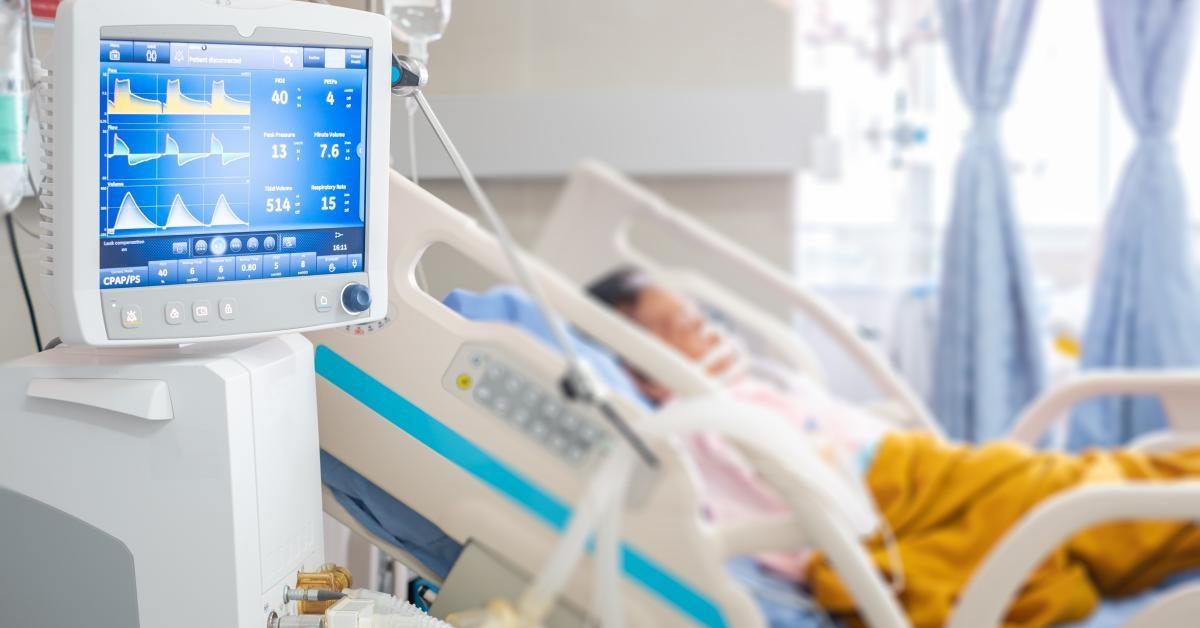Are you curious to know what is auto PEEP? You have come to the right place as I am going to tell you everything about auto PEEP in a very simple explanation. Without further discussion let’s begin to know what is auto PEEP?
In the realm of medical care, particularly in intensive care units (ICUs) and emergency situations, understanding respiratory mechanics and ventilation strategies is paramount. One crucial concept that healthcare professionals encounter is auto-positive end-expiratory pressure (auto-PEEP). This phenomenon has significant implications for patients on mechanical ventilation. In this blog, we’ll delve into the intricacies of auto-PEEP, its effects on the respiratory system, and its management to ensure optimal patient care.
What Is Auto PEEP?
Auto-PEEP, also known as intrinsic PEEP or air trapping, refers to a condition in which positive pressure remains in the airways at the end of exhalation, prior to the initiation of the next inhalation. This unintentional buildup of pressure can hinder the patient’s ability to exhale fully and compromise their respiratory function.
Understanding The Mechanism:
Auto-PEEP occurs when exhalation is insufficient due to the limited time between breaths. During mechanical ventilation, the ventilator may deliver the next breath before the patient has fully exhaled the previous breath. This can lead to a cumulative buildup of positive pressure in the airways, resulting in increased alveolar pressure and decreased lung compliance.
Effects On The Respiratory System:
Auto-PEEP can have several detrimental effects on the respiratory system:
- Barotrauma: Increased alveolar pressure caused by auto-PEEP can lead to barotrauma, which involves damage to the lung tissue and alveoli due to excessive pressure.
- Hemodynamic Compromise: Auto-PEEP can impede venous return to the heart, affecting cardiac output and potentially leading to decreased blood pressure.
- Hypotension: Increased intrathoracic pressure can compress the vena cava, reducing blood return to the heart and potentially causing hypotension.
- Impaired Oxygenation: Auto-PEEP can compromise oxygenation by reducing the effective lung volume and causing ventilation-perfusion mismatch.
Diagnosis And Management:
Diagnosing auto-PEEP requires careful assessment of ventilator waveforms and patient-ventilator interactions. Management strategies include:
- Adjusting Ventilation Settings: Modifying ventilator settings, such as increasing expiratory time, reducing tidal volume, or decreasing respiratory rate, can help prevent auto-PEEP.
- Manual Ventilation: Manual breaths can be provided to help patients exhale fully and reduce auto-PEEP.
- Bronchodilators: If airway resistance is a contributing factor, bronchodilators may be administered to alleviate obstruction.
- Sedation and Muscle Relaxants: These interventions can reduce the patient’s respiratory efforts and prevent excessive inspiratory efforts that contribute to auto-PEEP.
Conclusion:
Auto-PEEP is a critical consideration in mechanical ventilation, highlighting the intricate balance between delivering respiratory support and ensuring patient safety. Healthcare professionals must have a comprehensive understanding of respiratory mechanics and ventilation strategies to effectively manage auto-PEEP and its potential complications. By addressing this phenomenon promptly and tailoring ventilation strategies to individual patient needs, healthcare providers can optimize patient outcomes and provide the highest standard of care in challenging clinical scenarios.
Get Information About Advantages On Mainadvantages.
FAQ
What Is Auto-PEEP In Respiratory Failure?
Intrinsic positive end-expiratory pressure (auto-PEEP) is a common occurrence in patients with acute respiratory failure requiring mechanical ventilation. Auto-PEEP can cause severe respiratory and hemodynamic compromise. The presence of auto-PEEP should be suspected when airflow at end-exhalation is not zero.
How Is Auto-PEEP Measured?
Measuring AutoPEEP
It is calculated using the LSF method applied to the entire breath ( Respiratory mechanics by least squares fitting in mechanically ventilated patients: applications during paralysis and during pressure support ventilation.
What Are The 4 Signs Of AutoPEEP?
We emphasize that the four main clinical consequences of auto-PEEP are hypotension, ventilator-induced lung injury, patient–ventilator asynchrony, and increased dead space.
What Are The Two Types Of PEEP?
The two types of PEEP are extrinsic PEEP (PEEP applied by a ventilator) and intrinsic PEEP (PEEP caused by an incomplete exhalation). Pressure that is applied or increased during an inspiration is termed pressure support.
I Have Covered All The Following Queries And Topics In The Above Article
What Is Auto PEEP
What Is The Sifference Between Air Trapping And Auto PEEP
What Is Normal Auto PEEP
What Is The Difference Between Air Trapping And Auto-PEEP?
What Is Auto-PEEP? How Do You Correct It
What Is Auto-PEEP In Respiratory Therapy
What Is A Bad Range For Auto PEEP
What Is Auto PEEP In Mechanical Ventilation
What Is Auto PEEP On A Ventilator
What Is Auto PEEP
Is auto-PEEP good
